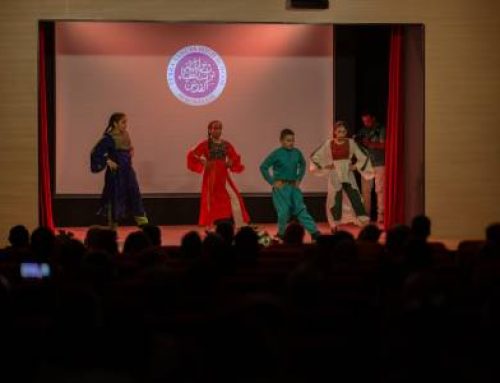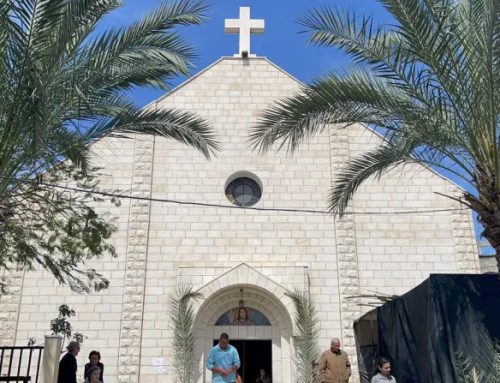According to my handbook, Annapolis is a city located in central Maryland on the south bank of the Severn River, near the mouth of the Chesapeake Bay.
According to my handbook, Annapolis is a city located in central Maryland on the south bank of the Severn River, near the mouth of the Chesapeake Bay. It celebrates this year Annapolis Alive! which consists of a yearlong series of events sparked by the 300th anniversary of the signing of its Royal Charter and the marking of its independence and participatory democracy. However, what my manual does not add is that this city will host on 27 November a conference at the US Naval Academy that brings together Israelis and Palestinians, along with a number of Arab states as well as the Quartet, the G-8 and smaller players such as Norway, Turkey and Senegal. Together, they will discuss the issues that pertain to the creation of an independent Palestinian state.
One question is to determine the countries that will finally join Israel and the Palestinians round the table of negotiations. For instance, it would be important to include high-level Jordanian and Egyptian participation since those are the only two Arab states that have diplomatic relations with Israel. It is equally important to have Saudi Arabia at Annapolis, not least because the kingdom chairs the Arab League committee promoting the 2002 Arab peace initiative and its presence is a buy-in for larger Arab support. Syria, on the other hand, has been ambivalent about its participation and has stressed that it is conditional upon discussing the return of the occupied Golan Heights. In fact, HM King Abdullah II of Jordan visited Syrian President Bashar El-Assad in Damascus last weekend to discuss the prospects for Annapolis, in addition to the Lebanese presidential crisis, Iraq and other regional concerns. To date, the only near certainty seems to be the attendance of the two main protagonists – Israel and the Palestinians – whose number of handshakes between their leaders belies the ostensible progress made between them as well as the four Members of the international Quartet. Indeed, the newly-appointed envoy for the Quartet, British ex-Prime Minister Tony Blair, who has been ensconced in his base of operations at the American Colony Hotel in Jerusalem, has been grappling with his job of unveiling a host of economic incentives and helping found a functional Palestinian state. It is therefore hoped that his international staff of 14 and an $8 million first-year budget would unwrap the Quartet from its stale packing and help broker such a historic deal.
One main reason why it took so long to set a date for the now-one-day conference is that the Palestinian and Israeli committees have not yet managed to finalise a concrete document that is tantamount to a declaration of principles for peace, and their efforts have continually been downgraded from the initial and ambitious framework for a comprehensive peace deal – so much so that the objectives of both parties have become somewhat distant and incompatible with the original hype that accompanied the idea of Annapolis when it was first introduced by the US Secretary of State.
Am I being a tad too harsh? Last week, the Palestinian Independent Commission for Citizens Rights, documenting Israeli restrictions on Palestinians, stated that most Palestinians living in the West Bank share a strong sense of scepticism. Their spokesperson added that US Secretary of State Condoleezza Rice has made seven trips to the region this year, but restrictions on Palestinians in the West Bank in the form of roadblocks and checkpoints have become even worse. Moreover, the Palestinian political analyst, Hani al-Masri, said that the pressure is now on the Palestinian side to return from Annapolis with real concessions from the Israelis – something few Palestinians believe will happen during this event. So what happens at Annapolis, who has a say in the outcome, and what pitfalls need to be avoided to ensure some momentum that draws the conference away from the brink of a fiasco?
I am afraid I do not see anything that is hugely different today from the realities prevailing during the final status talks that broke down in 2001 amidst mutual recriminations and the start-up of another Palestinian Intifada. To start with, it is clear to me that Israeli PM Ehud Olmert is a weakened premier who is making courageous noises about broad peace whilst also warning all and sundry not to augment the level of expectations about any major breakthroughs. In fact, and not unlike other Israeli leaders before him, it seems to me that the current prime minister might also be much more interested in perpetuating a peace process that hobbles on for more years than he is interested in a real and durable peace between both sides on the basis of national rights, security and justice that requires painful sacrifices. This might be as much because of a reluctance to give up territory as it is by the fact that his own shaky coalition would fall like a pack of dominoes in case he makes any substantive gestures toward the Palestinian side or even that he is himself under criminal investigations. PA President Mahmoud Abbas, on the other end of the irenic spectrum, is an equally weak negotiator. After all, part of the Palestinian territories
But let us for one moment forget that both sides are unable, or worse unwilling, to sue for peace. Let us also dismiss the reality that their objectives are divergent, with PM Olmert preferring a broad-brush non-binding joint statement whilst President Abbas pursuing a detailed framework agreement with a timeline for final-status negotiations. The fact remains that the issues surrounding a nascent Palestine are still as cumbersome and insuperable as ever.
For Annapolis to become different from its moribund predecessor conferences, summits and pow-wows, it is imperative not only to discuss final status issues but also to act upon them in a decisive manner that delivers palpable and concrete results. Those issues that need to be hammered out include land, borders and territorial withdrawals (which would also deal with new and expanding settlements with well over 200,000 settlers, let alone the parameters of the separation wall), the future of Jerusalem (including the Old City that hosts many religious sites precious to Jews, Christians and Muslims alike), water, security guarantees for both sides and refugees. However, what remains the hardest nut to crack is the matter of the over 4 million Palestinian refugees who would wish to see an implementation of the Right of Return.
Would it be possible for the two sides – even with the help of the Quartet – to tailor any deal that comes near enough to tackling those issues and delivering upon them? Are there the will and vision to find solutions to unfriendly problems? Equally importantly, where is the good will to move forward, and where is the good faith to show compromise wherever necessary in order to overcome obstacles? Only this week, Palestinian chief negotiator Ahmad Qrei and his team tried to enter Jerusalem from the Abu Dis district in order to meet with their Israeli counterparts and to discuss the Annapolis agenda. However, they were stopped at the checkpoint that straddles the 25-foot-high-wall and the meeting was axed eventually. It took Israeli Foreign Minister Tzipi Livni to call Qrei and apologise for this administrative [security] hiccup. It is true that this might be a simple enough incident, but it just shows the steepness of the mountain of mistrust on both sides if a chief negotiator cannot move into Jerusalem freely for pre-arranged negotiations with his Israeli counterparts!
In numerous articles in the past, I have advocated that one signal way forward is for Israel to accept the Arab / Saudi offer made at the Arab Summit of 2002 that traded full withdrawal from occupied territories by Israel with recognition of Israel by all Arab states. Alas, successive Israeli political establishments have not yet endorsed this offer. Perhaps it is time to do so now, especially if the incumbent US Administration has finally woken up to the fact that it had been dangerously somnolent for the past seven years in relation the Israeli-Palestinian conflict.
However, will this latest Annapolis conference – or more to the point this “one-day meeting” since it has been downgraded from a “two-day conference” – succeed where others failed, or have we not yet reached the classical peak of the bloody conflict to start talking about real resolutions? To be successful, Annapolis needs a genuine commitment by the US Administration, but I doubt the USA will import such a laborious commitment into this process. Rather, I think that this whole meeting could end up as another public relations effort or a photo-op that strives to show momentum, willingness and determination to move ahead on the Israeli-Palestinian file at a time when the American reputation is sadly smeared in the majority of the Arab and Muslim worlds. However, what unsettles me even more is that this meeting could merely become a way to build an alliance with other so-called moderate Arab states against Iran’s increasing hegemonic strength. Or as Martin Indyk from the Saban Center at the Brookings Institution said recently, it is an attempt at building “an anti-Iran counter-alliance”. Yet, if the USA were to fail in its latest endeavours to forge this very alliance, then it is quite possible that many of the Arab states would re-consider their tactical plans and perhaps try to win Syria over again by offering it the carrot of re-entering Lebanon. The US Administration would then face a Faustian bargain that would imply continuing the struggle against Iran at the cost of its own oft-stated principles.
A new verb, lecondel, has entered colloquial usage in Hebrew. Based upon the name of US Secretary of State Condoleeza Rice, it signifies ‘to come and go for meetings that produce few results’. So what is Annapolis, in Maryland, all about? Is it about peace? Is it about Syria and Iran? Is it another ripple in the murky pond of Middle Eastern politics? Will it be any more successful than Camp David was under Messrs Clinton, Arafat and Barak? I am painfully concerned that, once bereft of the frills, hype and verbiage, Annapolis will also become another one-day meeting where scepticism overtakes hopes – and in the process disappoints the laudable efforts of countless Palestinian and Israeli peace-seekers.





